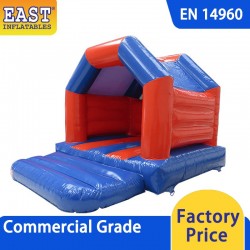
Inflatables, including inflatable decorations and structures, are popular for various outdoor events and festivities. However, one common question that arises is whether it's possible to use inflatables outdoors during the winter season. In this article, we will explore the feasibility of using inflatables in cold weather and provide tips for maximizing their longevity and effectiveness in such conditions.
The Suitability of Inflatables in Winter:
Using inflatables outdoors in winter is certainly possible, but there are a few factors to consider:
Material Quality: The quality of the inflatable's material is crucial. High-quality materials are more durable and less susceptible to damage from cold temperatures. Look for inflatables made from cold-resistant PVC or vinyl.
Inflation: The cold weather may affect the inflation of the inflatable. In colder temperatures, the air inside the inflatable may contract, causing it to deflate slightly. Make sure to check the inflation regularly and top it up as needed.
Weighted Anchoring: Winter often brings strong winds and snow. Properly anchor your inflatable using weighted bags or stakes to prevent it from blowing away or collapsing under the weight of snow.
Snow Load: Be cautious about heavy snow accumulation on the inflatable. Too much snow can damage the inflatable or cause it to lose its shape. Use a broom or soft brush to remove excess snow, being gentle to avoid puncturing the material.
Cold Air Inflation: Cold air is denser than warm air, which means the inflatable may need more air in colder temperatures to maintain its shape. Follow the manufacturer's recommendations for inflation pressures.
Temperature Limits: Pay attention to the temperature limits provided by the manufacturer. Some inflatables may not be suitable for extremely low temperatures.
Tips for Using Inflatables in Winter:
Inspect Regularly: Regularly inspect your inflatable for any signs of damage or wear and tear. This is especially important in winter, as cold temperatures can make materials more brittle.
Protective Cover: Consider using a protective cover to shield the inflatable from snow, ice, and freezing rain. This can help prolong its lifespan.
Deflate During Extreme Cold: If the temperature drops significantly, it might be a good idea to deflate the inflatable temporarily and store it indoors until conditions improve.
Proper Storage: When winter is over, store your inflatables in a cool, dry place away from direct sunlight. Clean and dry them thoroughly before storage to prevent mold and mildew growth.
Inflatables can indeed be used outdoors in winter, but it's essential to take precautions to ensure they remain in good condition and retain their visual appeal. By selecting high-quality materials, monitoring inflation, and following manufacturer guidelines, you can enjoy the festive and decorative qualities of inflatables even in cold weather. Remember that proper care and maintenance will extend the life of your inflatables and keep them looking great for many seasons to come.



Leave a Comment